WORLD CLASS COACHING
Pep Guardiola Attacking
By Luca Bertolini
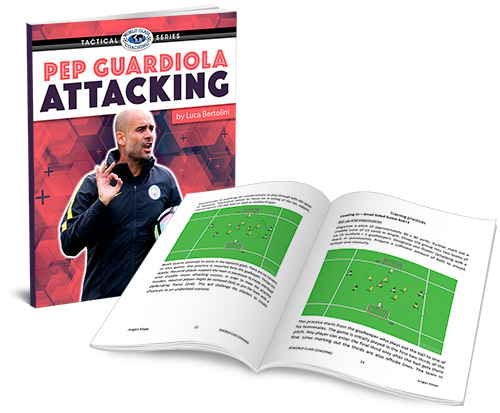
Table of Contents
PART THREE
Formations and Attacking Shapes Continued
Formations and Attacking Shapes Continued
When the opposition decides not to press the start of the moves and to defend the width, leaving the center players as defenders of the depth, the offensive phase is usually poor, as all the team must be placed behind the ball.
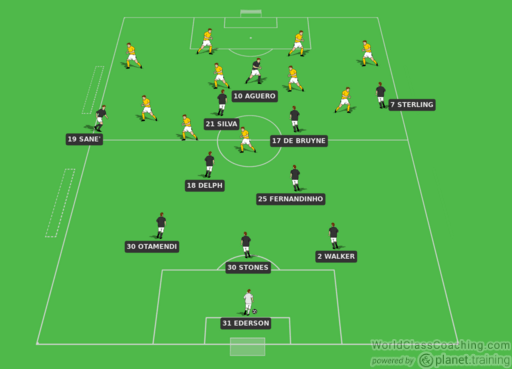
In this situation the opposition is defending the width with six players and other three are trying to block forward passes in the center through a 3 v 3 duel. In case of ball recovery, it would be very difficult to advance on the field, as 8 players are under the ball line; a long possession phase is required if a counter attack is not possible.
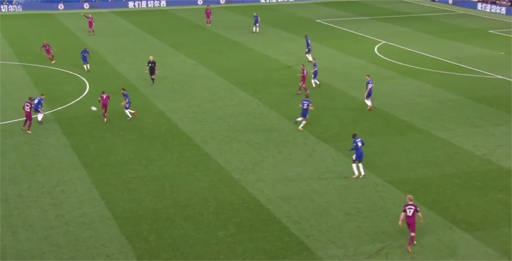
This situation is similar; the ball can be recovered close or inside the own penalty area, with few options to advance with an effective possession phase...
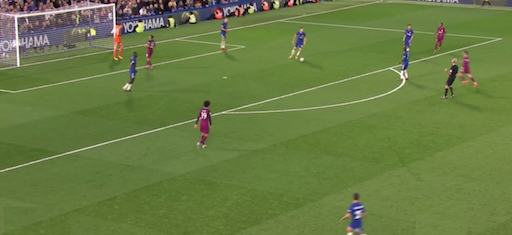
...and a high risk to lose the ball because of City aggressive counter-pressing.
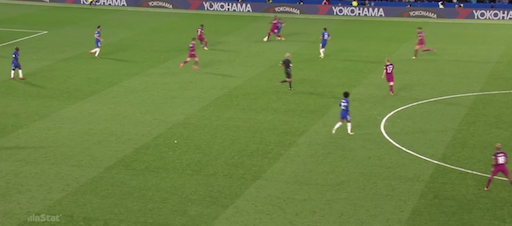
An effective offensive structure like Manchester City tries to shape is the requisite to apply an equally effective counter pressing; at the same time, with few options of transitions to attack for the opposition, the recovery of the possession is very likely.
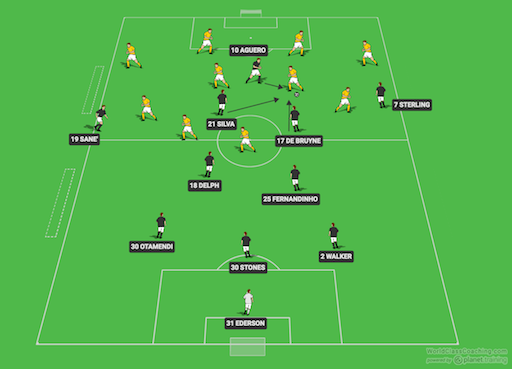
The main goal when the move is being played inside the attacking half, is to force the opposition toward the own goal, finishing inside the box or around it.
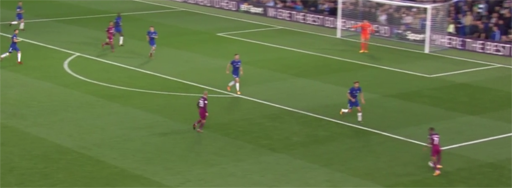
This is another type of formation, with the starting back three (1-3-5-2) that City shaped on the field in a winning Premier League match of last September the 9th, 2017, against Liverpool. Anyway the 1-4-3-3 has become the main system of play through the seasons and it's the most used by Guardiola as Man City manager. This was the line up: Ederson, Mendy, Stones, Otamendi, Danilo, Fernandinho, Walker, De Bruyne, David Silva, Aguero, Jesus.
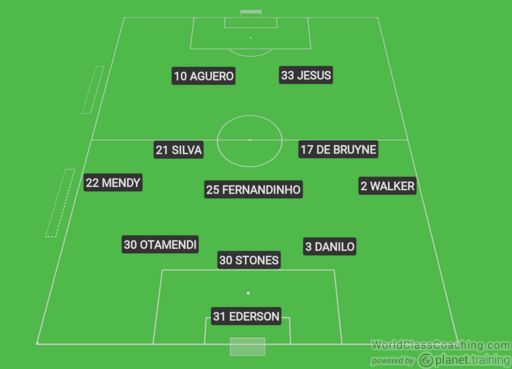
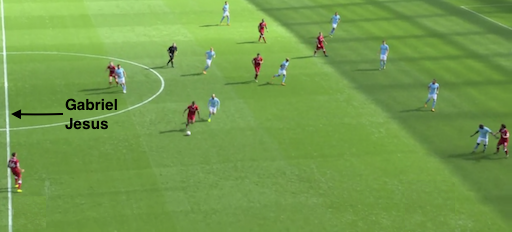
To build up, City is shaped in a 1-3-1-4-2. The usual 1-3-1 formation is used to start the move from the goalkeeper; the back line includes all the three center defenders.
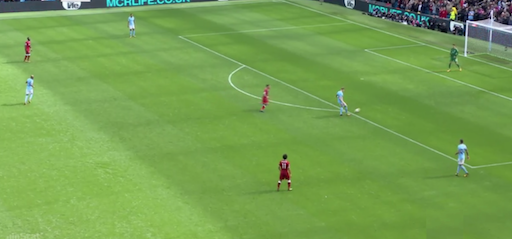
The midfield trio is required to help the build up from the back and to play out; the balance midfielder is also the playmaker.
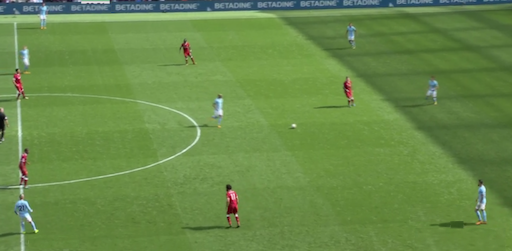
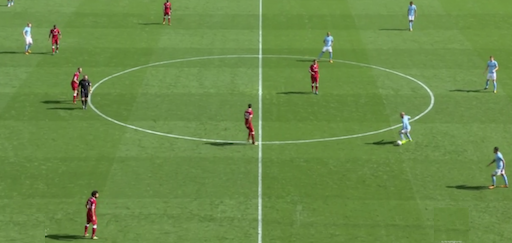
If the playmaker is under pressure or the opposition closes all the forward passing options, then one advanced midfielder drops back to support him and to play out. A 3+2 shape is then created.
But if there is no pressure, David Silva and De Bruyne place themselves in between the lines in the final third, shaping a small group of 3 + 1 forwards
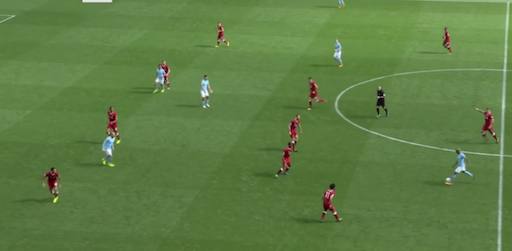
As we are going to analyze in the next pages, the center forwards are never placed on the same line, during possession phases; one of them drops back and the second one is placed on the defense line and ready to attack the depth.
The principle of play of two wide players is respected anyway; the fourth and fifth wide fullbacks on the left and on the right replace the wingers of the 1-4-3-3 system of play. A 5 (3+2) + 1 shape is created in the final third.
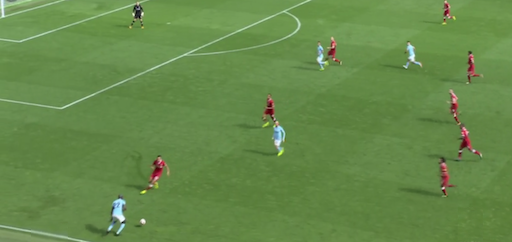
The nearest fullback to the ball must ensure the wide support for the attacking moves; one of the advanced midfielders must play in between the lines and as support for the couple of forwards.
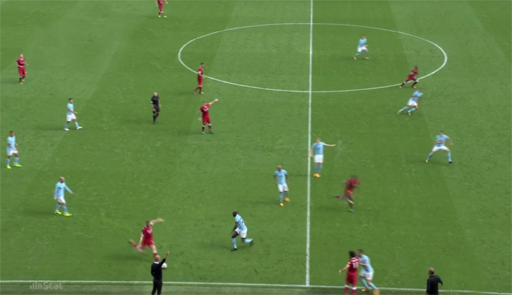
The opposite fullback, the center back and the second center defender must shape the back three line, to cover the depth. The second advanced midfielder (De Bruyne in the picture) must support the balance player as the inverted fullbacks usually do.
The two center forwards don't play on the same line during the defense phases; Aguero is usually on the same line of the advanced midfielders and Jesus is ready to attack the depth if the ball is recovered.
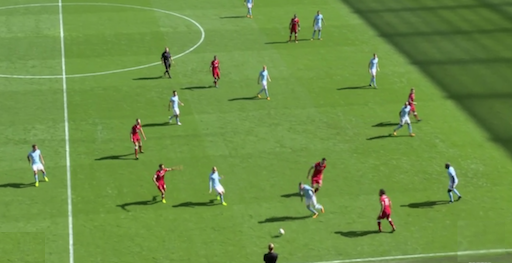
Here again, Aguero is helping David Silva to close the possession phase of the opposition toward the sideline, pressing the ball carrier, and Gabriel Jesus is ready to receive as the ball is recovered.
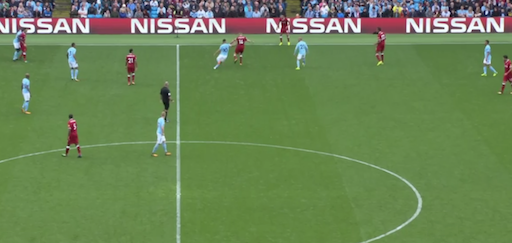
Aguero and Jesus are placed on the same line, on the opposition defense line, during low rhythm possession phases, and they place their bodies toward opposite direction; Aguero is positioned to drop back and to receive a pass from the center back and Jesus is positioned to attack the depth in this picture.
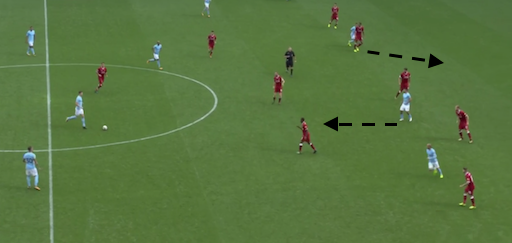
As one of them drops back (Aguero in the picture), the other one attacks the opposition penalty area behind the defenders.
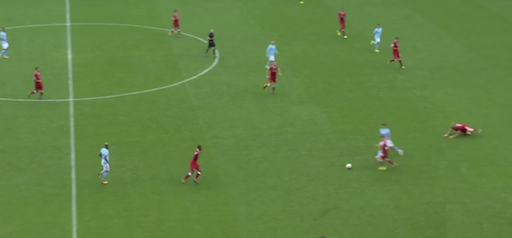
When the ball is played wide on the flanks, both the center forwards are positioned toward the opposition goal, to attack the penalty area and to exploit the space between the defense line and the goalkeeper.
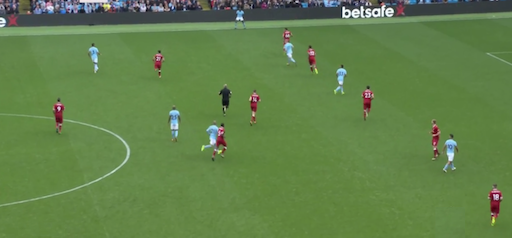
The main goal is to find positional advantage in the final third. In this situation Gabriel Jesus would be in a better position related to his nearest opponents, if he received, as he is positioned in the middle and the opponent who would have to be his marker seems to be on late. Aguero can start behind his direct marker who can't see him but on late.
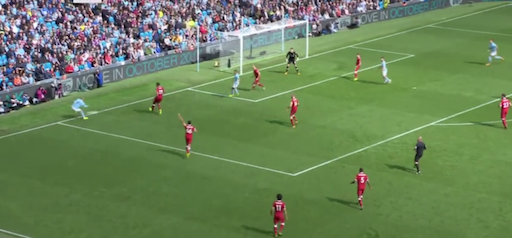
They attack the first and the second poles of the goal to finish. The goal area can be attacked both to finish directly inside there and to free the area just out of it, that is usually attacked by the advanced midfielders or by the balance one too.


